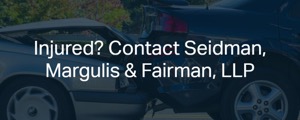
Chain-reaction car accidents can result in significant injuries and extensive property damage for those involved. These incidents are particularly frustrating because it can be incredibly challenging to prove fault for what happened. Often, there are three or more drivers involved in chain-reaction crashes, which means that there will be multiple insurance carriers all trying to lay the blame on someone other than their policyholder.
Here, we want to look at who could be at fault after a chain-reaction car accident in Illinois. We also want to examine what would happen to any settlement if more than one party is at fault for the incident.
Defining a Chain-Reaction Collision
When a collision is referred to as a chain reaction, this typically means that there are more than two vehicles involved. In most situations, a chain-reaction collision begins with an initial collision between two vehicles that create enough forces to cause one or both of those vehicles to slam into other vehicles in the vicinity. This can include a range of possible scenarios:
- Vehicle 1 is rear-ended by Vehicle 2 at a stop sign or stoplight. The force of the collision could cause vehicle one to move forward into oncoming traffic and slam into a third, fourth, or fifth vehicle (and so on).
- Two vehicles are stopped at a red light or stop sign when a third vehicle approaches from the rear and fails to stop. The third vehicle could slam into the second vehicle, which subsequently causes the second vehicle to slam into the first vehicle.
- A driver in Vehicle 1 has to slam on their brakes to avoid striking an obstacle in the roadway. This could cause Vehicle 2 to slam into the rear of Vehicle 1. Vehicle 3, following closely behind Vehicle 2, could slam into the rear of Vehicle 2, exasperating the incident for everyone involved.
These are only three possible scenarios that could lead to a chain-reaction collision, but there are many other ways that these incidents arise.
Who Caused a Chain-Reaction Crash?
In most chain-reaction collisions, we will find that these incidents are caused by driving errors made by one or more parties involved. Some of the most common causes of chain-reaction collisions in Illinois include the following:
- Following too closely. Tailgating is dangerous. When one driver is following another too closely, this could lead to severe accidents in the event the front vehicle has to make a sudden stop.
- Speeding. Anytime a driver is operating too fast for conditions, they lose the time needed to react if hazardous situations arise.
- Not using a turn signal. Anytime a driver fails to use a turn signal to indicate an impending turn or lane change, drivers around them may not be able to react quickly enough to changing situations.
- Alcohol impairment. Alcohol-impaired drivers do not have the ability to operate a vehicle safely. Drunk drivers often follow other vehicles closely, drive too fast for conditions, and have delayed reaction times.
- Distractions. There are various types of distracted driving behaviors that could lead to chain-reaction collisions. This includes talking on the phone, sending or receiving text messages, taking photographs, browsing social media, eating or drinking, and more.
Shared Fault for a Chain-Reaction Crash
It could be the case that more than one driver is responsible for a chain-reaction collision. Illinois operates under a “modified comparative negligence” system. This means that any person less than 50% responsible for a collision can still recover compensation. However, the total amount of compensation they receive will be reduced based on their percentage of fault. Any driver 50% or more responsible for a chain-reaction collision will be unable to recover compensation for their losses.
 North Chicago & St. Louis Injury Updates
North Chicago & St. Louis Injury Updates

